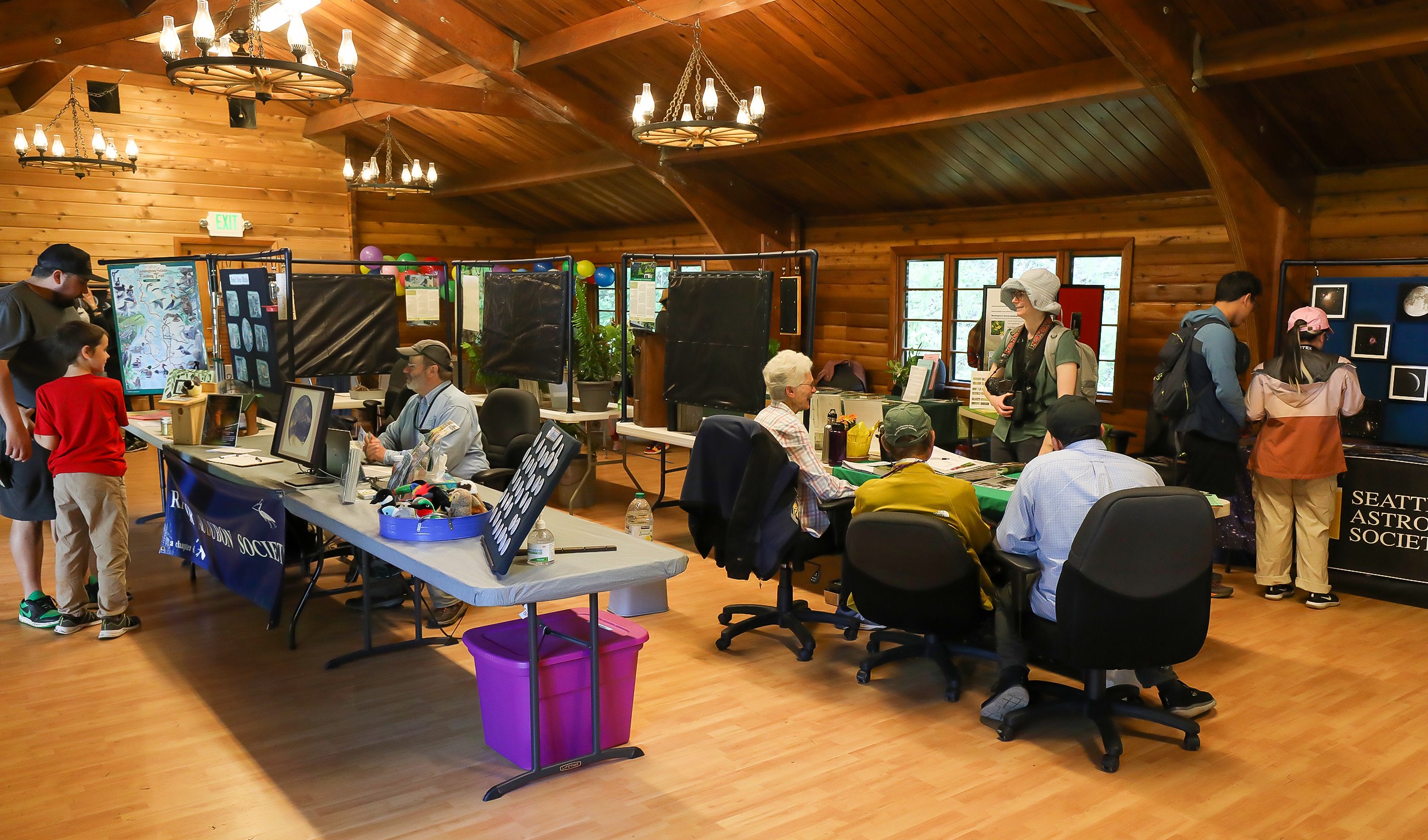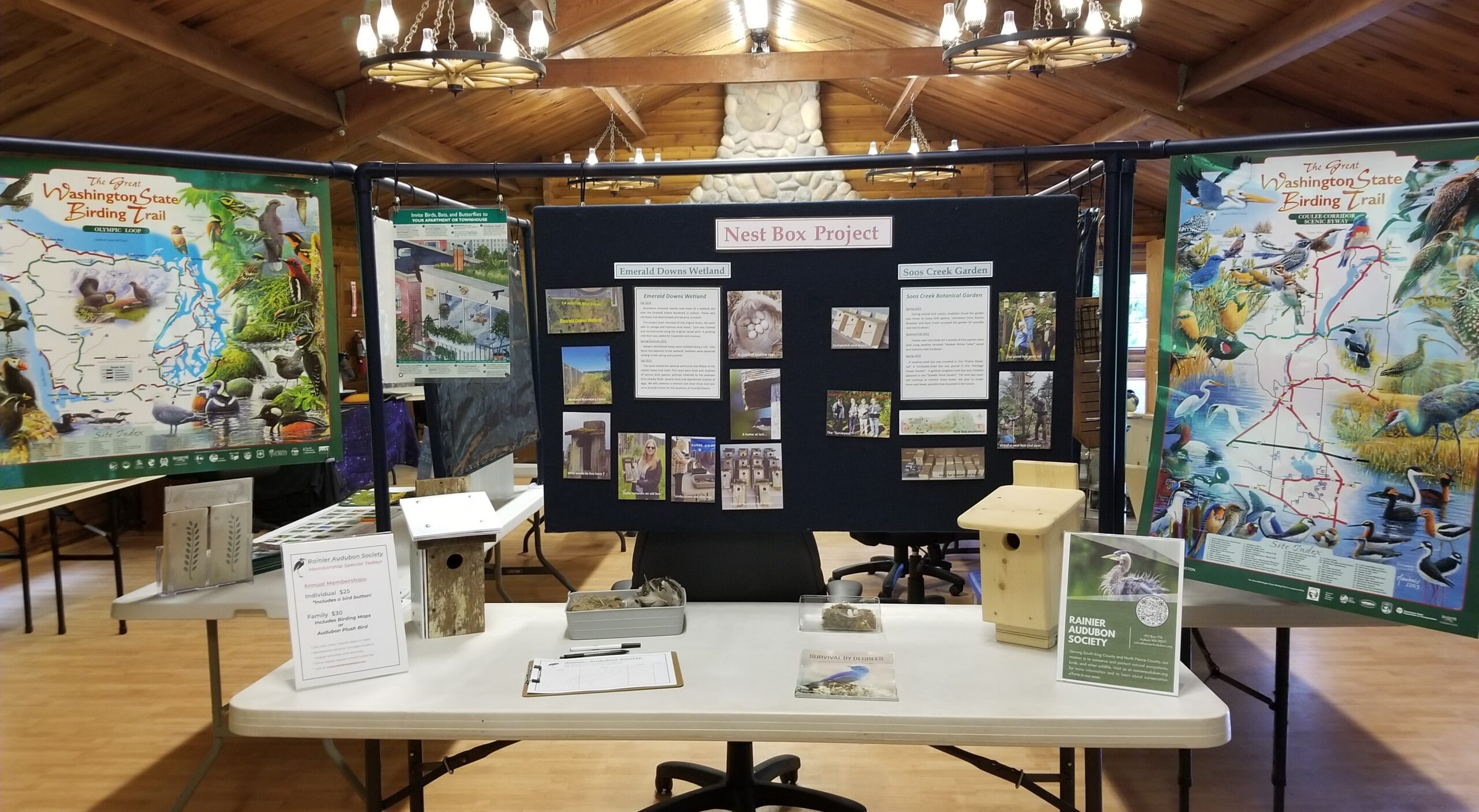

Mewsings from Millie – October 2024
(Reprinted with permission from the Burien Wild Birds Unlimited store.)
Marbled Murrelet photo by Else Mikkelsen – https://www.flickr.com/photos/66959995@N05/

Some people think it’s kind of quirky for a cat to live in a store for the birds. Well, how about a tiny seabird that nests in old growth forest 40 to 50 miles inland? Now THAT’s quirky!
The bird I’m speaking of is the Marbled Murrelet. It’s a plump, chunky little bird with narrow, pointed wings, fondly referred to by some as a ‘flying potato’. But boy, can it fly! One Marbled Murrelet was clocked at 103 mph! Mom and dad will fly 100 miles round trip from the nest to the sea several times a day to feed each other during incubation and to feed their chick. That’s quite amazing!
Not a whole lot is known about Marbled Murrelets, but that is changing. They are related to murres, guillemots, auklets and puffins. Fishermen called them ‘Australian Bumblebees’ and loggers called them ‘fog larks’ or ‘fogbirds’.
The first Marbled Murrelet nest wasn’t discovered until 1974 – but then who would think to look for a seabird nest 150 feet in the air on a branch of a 200-year-old conifer? By 2016 only about 160 nests had been discovered.
Found along the Pacific Coast, Marbled Murrelets inhabit clam, shallow coastal waters and bays. They dive, soaring effortlessly through the water, foraging for tiny fish and other small sea creatures.
When nesting time comes, Marbled Murrelets seek out a wide horizontal branch on a mature conifer. The nest is a bed of soft moss and lichen. When laid, the single green speckled egg is well camouflaged from its major predators, Steller’s Jays and Ravens.
Mom and dad take turns incubating the egg, changing places every morning at dawn. One will sit on the egg while the other forages for food at sea miles away. After about four weeks, the down-covered chick will hatch, and mom and dad will both work to feed it. In another four weeks, the chick will leave the nest on its own during the night, heading by instinct toward the sea. [One such chick landed in the yard of Rainier’s own Thais Bock in the Marine Hills area of Federal Way. Sadly, having gotten so close to the saltwater, it did not survive.]
In spite of protections provided by the Northwest Forest Plan, not all is good in the world of the threatened Marbled Murrelet. Besides the dangers of oil spills and entanglement in gill nets, loss of habitat due to logging has caused their population to decline.
Wildlife biologists with the USDA Forest Service Pacific Northwest Research Station, used radio telemetry—the first study of its kind in Washington—to develop a detailed picture of the challenges faced by marbled murrelets. Between 2004 and 2008, the scientists captured 157 murrelets in their marine feeding grounds, fitted them with transmitters, and tracked their movements. They wanted to gain a better understanding of the birds’ nesting habitat, and as a result, be able to provide information that can contribute to conservation plans.
Researchers found that factors on both land and on water may be responsible for Murrelet decline. Human activity on the water, coupled with the changing ocean conditions, likely affected the abundance of fish in the water. On land, a continuing decrease in nesting habitat is resulting in fewer nests, leading to lower rates of reproduction and a smaller population size. Although murrelet habitat in federal forests is protected, these areas tend to be farther inland than unprotected private and state forests in northwest Washington.
If you’d like to learn more about this special bird, go to: Marbled Murrelet | Conservation Northwest (conservationnw.org) or read Rare Bird by Maria Mudd Ruth.
Until next time,
Millie, the Muse of Mews



